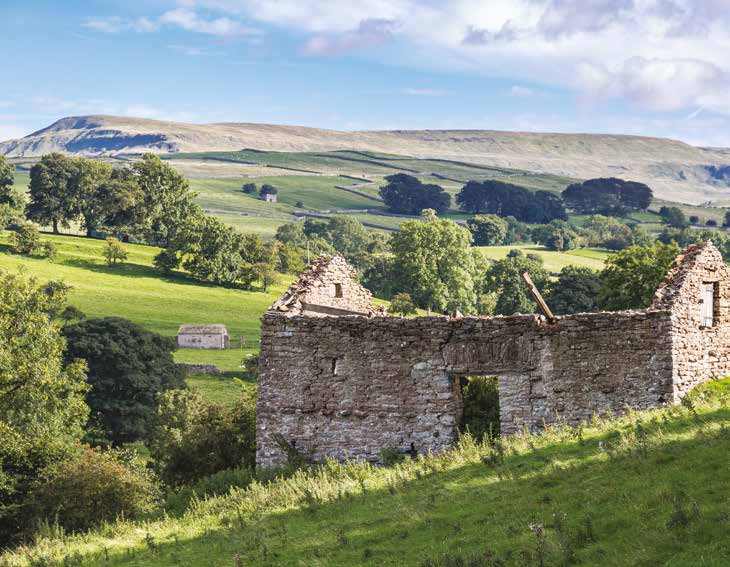
With unauthorised work on a listed building making the news recently, Planning Partner Duncan Tilney explains what to look out for when deciding if a building and its accompanying structures are listed.
A listed building (or structure) is protected by statute and the carrying out of unauthorised works that affect its character as a building of architectural or historic interests could lead to prosecution and a criminal record.
It is important to say that not all works to a listed building necessarily need consent, because not all works will affect its character. That is a matter of judgement on a case-by-case basis. However, a more important question is whether a particular building is even listed or not (benefits from listing protection).
A record of all listings is maintained and available online from Historic England. However, the fact that an item/ building/ structure doesn’t feature in the description of a particular listing does not, of itself, mean that the item/ building/ structure is not listed (the lists are not exhaustive). This article focuses, in particular, on the concept of heritage listing.
The Listed Buildings Act provides that where an object or structure is within the curtilage of a listed building and forms part of the land with that listed building and has done so since 1 July 1948 then that structure is treated as being part of the listed building and is protected accordingly. Because the structure is only protected by virtue of being in the curtilage of a listed building, it won’t have its own listing. Significantly, that will remain the case even if the ownership of the land is split so that the listed building is in one ownership and the ‘curtilage listed’ structure is in another. This can lead to confusion over the status of that structure.
Although the point in time for the existence of the structure is 1 July 1948, the point of assessment of the curtilage is the date on which the building was listed. Subsequent changes to the size of that curtilage won’t affect the listing, but a division of the land prior to listing might be significant.
By way of example, if a house is listed in 1980 and a domestic outbuilding is within the curtilage of that house and has been part of the land with that house since it was built in 1850, the outbuilding is protected as part of the listing. In 1995, part of the garden, including the outbuilding, is sold to a neighbour (occupying a modern un-listed property). That neighbour then markets the outbuilding and land as a plot for development.
The sale is advertised as being of land that had formed part of the garden of an unlisted house along with an outbuilding suitable for conversion. A search of the online database won’t show a listed status for the outbuilding, because it won’t have now and never did have its own separate listing. Consideration of curtilage would seem to be pointless because the land is being sold from an un-listed property. However, ignoring the listed status of the building and proceeding with works without the appropriate authorization could result in prosecution.
The key question to be asked is “where did the structure come from?” In the example above, it clearly didn’t originate with the house from which it was ultimately separated for the ‘development’ sale. Tracing its history back, it would have been discovered that it had been separated initially from the neighbouring listed building and that it was a curtilage building at the point of listing and was therefore protected by that ‘parent’ building’s listing. As ever, buyer beware.
What about barns?
In the example above, we looked at a structure that sits (legally) happily within the curtilage of a house. However, in most cases, agricultural barns won’t derive listed status from their relationship with an adjacent listed farmhouse, regardless of how close they are physically. That is for the simple reason that barns and farmhouses are likely to be in separate planning units (a concept very different from being part of the same agricultural unit). The planning unit accommodating the farmhouse, as a single dwellinghouse, is likely to be limited to the house, its garden and perhaps a forecourt. The barns, on the other hand, are agricultural buildings; they don’t serve the purpose of the house (as opposed to the business) in some necessary or useful way.
When is a barn not a barn?
Landowners will often take a fluid approach to defining buildings that they own on a large holding, wishing to see them as listed or not listed, domestic or farming and redundant or essential depending on the intentions at any point in time. It is, of course, possible for the planning status of a building to change. However, at any one point in time (as for Schrödinger’s cat) a building can only have one defined status. In the case of a structure that has the appearance of a barn, the question is what is its current lawful use. If the facts of the case are that the building is and was in lawful use as a garage associated with the farmhouse and it has a sufficiently close physical relationship to the farmhouse at the point of listing then it might be considered to be a curtilage listed building and protected accordingly.
Application strategy
It could be tempting, given the above analysis, simply to apply for listed buildings consent as part of a conversion project – just to be on the safe side. However, once a building has been identified as listed (correctly or incorrectly) the Local Planning Authority is then under a duty to have special regard to the desirability of preserving the building. This duty will make consent for demolition very difficult to achieve, even modest works will attract a far higher level of scrutiny and restrict your ability to undertake your desired works. Needless to say, on receipt of an application for listed buildings consent, Local Planning Authorities are unlikely to expend efforts themselves to establish whether the correct ‘call’ has been made as to the extent of the curtilage. That can then have a legacy, where the LPA is unwilling to engage with a current owner on whether its view of listing protection is correct, because a previous owner, or the current owner in a previous phase, had applied for listed buildings consent. The path of least resistance is rarely a sustainable longer term strategy.
If you require assistance regarding listed buildings consent, please contact our Planning team.
